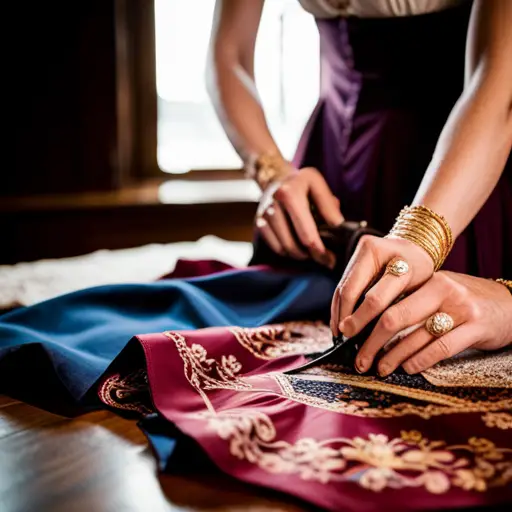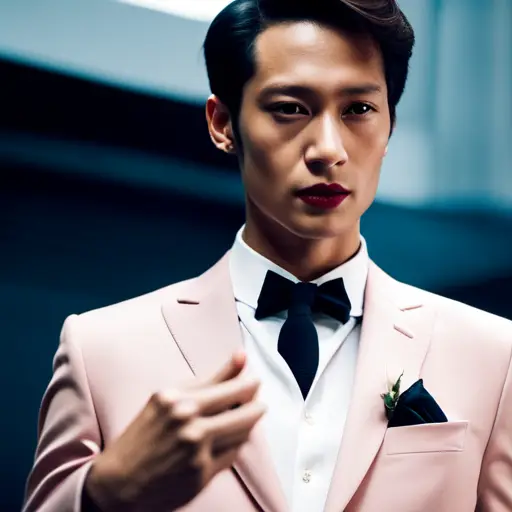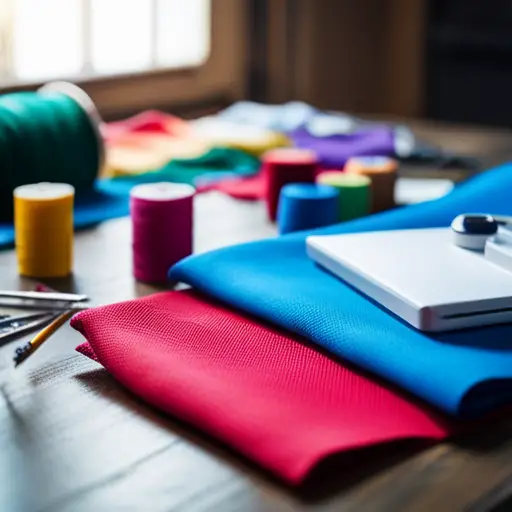Designing Costumes for Historical Reenactments

Delving into the dynamic world of historical reenactments, the art of designing costumes demands a delicate dance of detail and authenticity.
From meticulous research to the selection of authentic fabrics, every aspect of the design process seeks to transport performers and audiences alike to bygone eras.
This evocative endeavor brings history to life through the lens of clothing, ensuring a captivating and historically accurate portrayal of the past.
Researching Historical Clothing
When designing costumes for historical reenactments, thorough research into historical clothing is essential for achieving authenticity and accuracy. Historical fashion serves as a crucial foundation, as it reflects the societal, cultural, and economic influences of a particular era. Understanding the nuances of historical fashion, such as silhouette, fabric, color, and embellishments, is paramount in creating costumes that transport the audience back in time.
Costume accuracy hinges on comprehensive knowledge of the specific time period being portrayed. This entails delving into primary sources, such as paintings, illustrations, and written descriptions, to grasp the intricate details of attire worn by individuals from varying social strata. Additionally, the study of extant garments provides invaluable insights into construction techniques, fabric choices, and garment embellishments, further enriching the authenticity of the costumes.
Achieving costume accuracy also involves considering regional and cultural differences in clothing styles within the chosen historical period. These variations may encompass attire worn by different classes, professions, or ethnic groups, necessitating meticulous research to capture the diversity and complexity of historical fashion. By immersing oneself in the sartorial customs of the past, designers can meticulously craft costumes that resonate with historical accuracy and captivate audiences with their attention to detail.
Selecting Authentic Fabric Choices
When it comes to designing costumes for historical reenactments, selecting authentic fabric choices is essential for achieving historical accuracy. The cultural significance of textiles plays a crucial role in accurately representing different time periods and regions.
Additionally, practicality and durability are important factors to consider when choosing fabrics for costumes that will be worn during reenactments.
Historical Accuracy in Fabrics
Selecting authentic fabric choices for historical reenactment costumes is crucial for achieving an accurate representation of the time period being portrayed. Fabric authenticity and preservation are essential considerations when sourcing textiles for historical costumes. It is imperative to prioritize textile sourcing and conservation to ensure that the fabrics used closely resemble those from the specific era. By carefully selecting fabrics that are historically accurate, reenactors contribute to the preservation of traditional textile techniques and materials. Below is a table outlining some authentic fabric choices for common historical reenactment periods:
| Time Period | Authentic Fabric Choices |
|---|---|
| Medieval | Wool, Linen, Silk |
| Victorian Era | Cotton, Velvet, Taffeta |
| Roaring Twenties | Chiffon, Satin, Velvet |
Understanding the historical context of fabric choices is crucial for accurately representing the time period in question.
The subsequent section will delve into the cultural significance of textiles.
Cultural Significance of Textiles
The cultural significance of textiles in historical reenactments lies in the meticulous selection of authentic fabric choices that accurately reflect the traditions and materials of the respective time periods. Textile symbolism plays a crucial role in capturing the essence of historical eras, as fabrics often held deep cultural and societal meanings.
The selection of textiles should consider traditional craftsmanship, ensuring that the chosen fabrics align with the techniques and materials used during the period being reenacted. For example, the use of hand-spun wool may be representative of a particular era, while intricate patterns or dyeing methods can convey specific social or economic statuses.
Practicality and Durability
Considering the cultural significance of textiles, prioritizing practicality and durability in fabric choices for historical reenactments becomes imperative. Durability and functionality are crucial aspects to consider when selecting authentic fabric choices for reenactment costumes. It is essential to choose fabrics that not only align with historical accuracy but also offer wearability and practicality for the reenactors. The table below outlines some authentic fabric choices commonly used in historical reenactments, emphasizing their durability, functionality, authenticity, and wearability.
| Fabric | Durability | Functionality | Authenticity | Wearability |
|---|---|---|---|---|
| Wool | High | Insulation | Very High | Moderate |
| Linen | Moderate | Breathability | High | High |
| Silk | Low | Luxurious drape | Very High | Low |
| Cotton | Moderate | Versatility | High | High |
| Leather | High | Protection | High | Low |
Incorporating Period-Appropriate Details
When it comes to designing costumes for historical reenactments, attention to period-appropriate details is crucial for achieving authenticity. Incorporating authentic fabric choices, accurate accessory selection, and period-specific color palettes are essential elements in creating historically accurate costumes.
These details can bring the historical era to life, adding depth and richness to the overall reenactment experience.
Authentic Fabric Choices
Selecting authentic fabrics for historical reenactment costumes involves carefully researching and incorporating period-appropriate details to enhance the overall authenticity of the design. When considering fabric choices for historical reenactment costumes, several key factors come into play:
-
Fabric authenticity, sourcing: Research and source fabrics that were available and commonly used during the specific historical period being reenacted.
-
Fabric care, preservation: Understand the historical methods of fabric care and preservation to ensure the longevity and authenticity of the costume.
-
Weave and texture: Pay attention to the weave and texture of the fabric, as different historical periods favored specific weaves and textures.
-
Color accuracy: Choose colors that were achievable during the historical period, considering natural dye options and historical color palettes.
-
Trims and embellishments: Incorporate trims and embellishments that were popular during the chosen historical era, paying attention to their historical accuracy and significance.
Transitioning into the subsequent section about ‘accurate accessory selection’, the choice of authentic fabrics sets the foundation for a truly immersive historical reenactment experience.
Accurate Accessory Selection
The accurate selection of period-appropriate accessories is essential for enhancing the authenticity of historical reenactment costumes. Material authenticity and cultural significance play a crucial role in this selection process.
It is important to choose accessories made from materials that were historically accurate for the period being portrayed, such as leather, metal, or natural fibers. Understanding the cultural significance of specific accessories, like jewelry or headwear, adds depth to the costume and enriches the storytelling aspect of the reenactment.
Practicality is equally vital; accessories should be chosen based on their historical accuracy and functionality. Whether it’s a belt, a handbag, or a hat, each accessory should serve a practical purpose while reflecting the fashion and lifestyle of the era being depicted.
Period-Specific Color Palettes
To authentically capture the essence of historical periods in costume design, incorporating period-specific color palettes and details is imperative for achieving a visually accurate representation. When delving into historical reenactments, the following aspects should be considered:
-
Color Symbolism: Understanding the cultural and symbolic meanings behind colors used during the specific historical period is essential for accurately portraying the societal values and beliefs.
-
Dye Techniques: Researching and implementing dye techniques that were prevalent during the period adds authenticity to the costumes, ensuring that the colors used are true to the era’s available resources and methods.
-
Natural vs. Synthetic Dyes: Exploring whether natural or synthetic dyes were predominantly used during the period and incorporating the appropriate type of dye into the costume design.
-
Regional Influences: Considering the regional variations in color preferences and dyeing techniques to accurately represent different geographical areas within the historical period.
-
Historical Textiles: Studying historical textiles and referencing their color palettes to ensure authenticity in costume design.
Considering Practicality for Performers
Practicality is a crucial consideration when designing costumes for historical reenactments to ensure performers can move comfortably and safely while maintaining historical accuracy. Understanding performers’ needs is essential to create costumes that not only look authentic but also function effectively.
Costume functionality is a key aspect of practicality, as performers must be able to move, breathe, and perform various activities while wearing historically accurate attire. When considering practicality for performers, it’s important to choose fabrics that are breathable and allow for ease of movement. Historical costumes often involve layers, so it’s essential to select lightweight materials to prevent performers from overheating or feeling restricted.
Additionally, paying attention to the construction of garments, such as incorporating adjustable closures or hidden pockets for personal items, can enhance both practicality and historical accuracy. Furthermore, footwear is a crucial aspect of performer practicality. Historical reenactments often involve long hours of standing and moving, so comfortable and supportive footwear is essential to prevent discomfort and potential injuries.
Taking into account the specific needs of performers, such as providing arch support or non-slip soles, contributes to the overall practicality of the costumes. In essence, considering practicality for performers in historical reenactments involves a thoughtful approach to costume design that prioritizes both historical accuracy and the comfort and safety of the performers.
Ensuring Historical Accuracy
When ensuring historical accuracy in costume design for reenactments, it is imperative to meticulously research and reference authentic historical garments to capture the nuances of each era’s fashion and dress. Achieving costume accuracy is not only essential for the visual appeal of the reenactment but also for providing historical education to the audience.
To ensure authenticity in historical reenactments, the following factors should be considered:
- Period-specific fabrics and materials must be carefully selected to replicate the textures and appearance of historical clothing.
- Attention to detail in terms of trims, embellishments, and fastenings is crucial for accurately representing the fashion of the era.
- Understanding the social status and occupation of the characters being portrayed to tailor the costumes accordingly.
- Incorporating accurate undergarments and accessories such as hats, shoes, and jewelry to complete the authentic look of each historical period.
- Collaborating with historians and scholars to validate the historical accuracy of the costumes and ensure that they align with documented evidence from the time period.
Bringing History to Life Through Clothing
Bringing History to Life Through Clothing involves not only replicating the visual aspects of historical garments but also embodying the cultural and societal significance they held during their respective eras. Costume construction plays a pivotal role in this process, requiring meticulous attention to historical accuracy. Designers must delve into the intricacies of historical clothing, studying the construction techniques and materials used during different time periods.
Furthermore, textile symbolism and cultural significance are essential elements in accurately capturing the essence of historical attire. Fabrics and embellishments often held specific meanings and were indicative of societal norms, religious beliefs, and economic status. Understanding these nuances is crucial in bringing historical clothing to life and conveying the narratives of the past.
Frequently Asked Questions
How Do You Ensure the Costumes Are Comfortable for Performers to Wear for Long Periods of Time?
When ensuring comfort for long-term wear, it’s crucial to prioritize material authenticity and address fabric challenges. Attention to detail in design and construction, such as seam placement and breathable fabrics, contributes to performers’ comfort during extended use.
What Are Some Common Misconceptions About Historical Clothing That You Often Have to Correct When Designing Costumes for Reenactments?
Common misconceptions about historical clothing often involve its discomfort and impracticality. When designing costumes for reenactments, it’s crucial to emphasize historical accuracy while debunking myths surrounding uncomfortable and impractical performance attire.
How Do You Handle Situations Where Historical Accuracy Conflicts With the Needs of the Performers or the Practicalities of the Performance?
Balancing historical accuracy with performer needs and practicality in costume design requires careful consideration. It involves thorough research, creative problem-solving, and collaboration with performers to ensure both authenticity and functionality without compromising the essence of the historical reenactments.
What Are Some Challenges You Face When Sourcing Authentic Fabric Choices for Historical Reenactment Costumes?
Sourcing authentic fabric choices for historical reenactment costumes poses challenges due to limited availability, cost, and quality. It involves navigating historical clothing misconceptions, ensuring comfort and performance. The process demands meticulous research and a discerning eye.
Can You Provide Examples of How Historical Clothing Has Been Brought to Life Through Costume Design in Past Reenactment Events?
Examples of historical clothing brought to life through costume design include meticulously researched patterns, authentic fabrics, and attention to detail. From Renaissance gowns to Civil War uniforms, these costumes capture the essence of the past.
Conclusion
In conclusion, designing costumes for historical reenactments requires meticulous research, attention to detail, and a commitment to historical accuracy.
It is essential to select authentic fabrics, incorporate period-appropriate details, and ensure practicality for performers.
By bringing history to life through clothing, reenactors can transport audiences to another time.
The irony lies in the fact that while the costumes may appear simple, the process of creating them is anything but.




